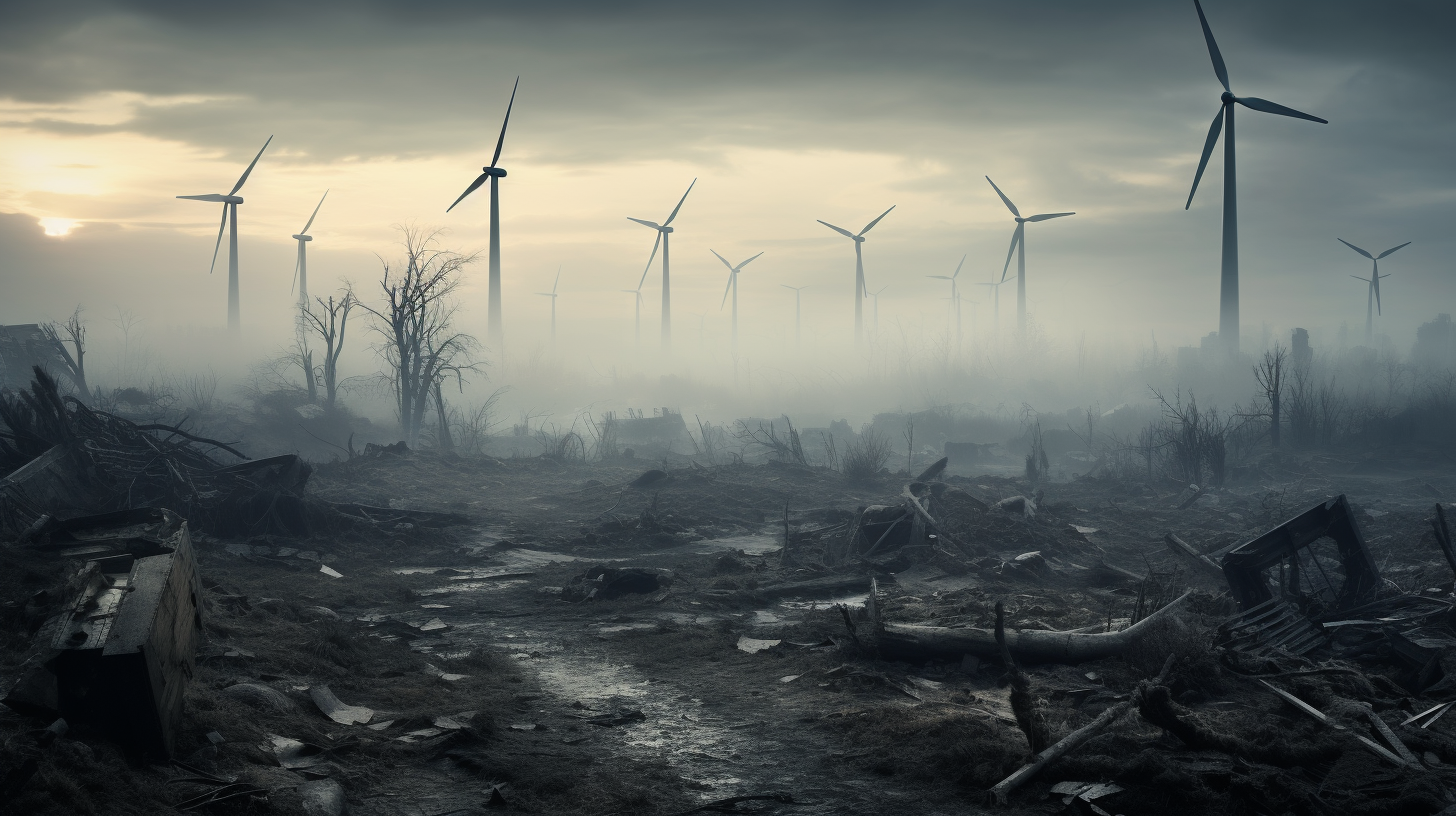In a world where the whispers of wind once spoke of hope and rejuvenation, the same gusts now carry the weight of a bleak prognosis. Not long ago, the horizon was lined with the elegant silhouettes of wind turbines, their blades cutting through the air, a testament to our commitment to a greener tomorrow. As we traverse the tortured remains of this world, we encounter the Turbines of Despair, where green energy and grim reality are entangled in an inexorable waltz of decay.
Once symbols of human ingenuity and the promise of a future powered by the very forces of nature, the turbines now stand as idle monoliths in a landscape that has surrendered to the relentless march of environmental collapse. Where laughter and excitement once echoed with each new installation, today there is only the hollow sound of their stationary blades, a mocking reminder of what could have been—a world saved by green energy.
The howling winds of change have left these giants immobile, not by sheer natural force but by the systemic failure to protect their very source of life. Our rivers have dried up, and our forests have turned to ash; and the great forces behind these turbines now only whisper-lifeless gusts incapable of powering even the smallest of homes.
One can’t help but stand beneath these edifices and gaze upwards with a sense of having been part of a cruel jest. There’s irony in the rusting gears and the shattered dreams, all wrapped up in the grandeur of these structures that were supposed to outlive us all. It’s as if the very climate that once energized them has retracted its benevolent hand in punishment for our years of ecological abuse.
Interviews with former engineers and technicians who once serviced these behemoths reveal a tapestry of frustration and despair. “We built these turbines to last,” one reminisced, his voice tinged with the sorrow of defeat. “But we didn’t build our society to protect them, to sustain the conditions necessary for their operation.” He paused, looking out over a field of still blades, “We’re reaping the whirlwind of our own neglect.”
The tragic tableau is not without the struggling pockets of humanity that try to eke out a living in the shadows of these forsaken spires. Children, who should be filled with wonder at the marvels of technology, instead play in the dust at the feet of these giants, ignorant of the lost world that once bubbled with the possibility of clean energy.
Much like the eerie calm that follows a devastating storm, the serenity that envelops these sites belies the turbulence that led to their cessation. It’s as though the environment itself has imposed a moratorium on humanity’s hubris, enforcing a silence that speaks volumes about the precarious intersection of human ambition and nature’s limits.
As our journey through this desolate landscape comes to a close, it’s clear that the Turbines of Despair are not merely relics of a bygone era but are beacons of a future we failed to reach. Their motionless blades cast long shadows over the land, a dark canvas upon which we must painfully etch the story of our own undoing.
There is a striking absence of silver linings in the clouds that loom above us—perhaps a deliberate choice by the climate that we’ve spent so long betraying. We’re left to ponder whether these silent sentinels are monuments to our past ambitions or tombstones for the world we once knew.
